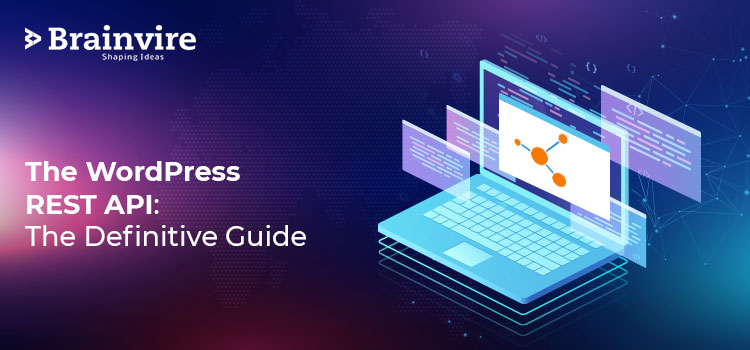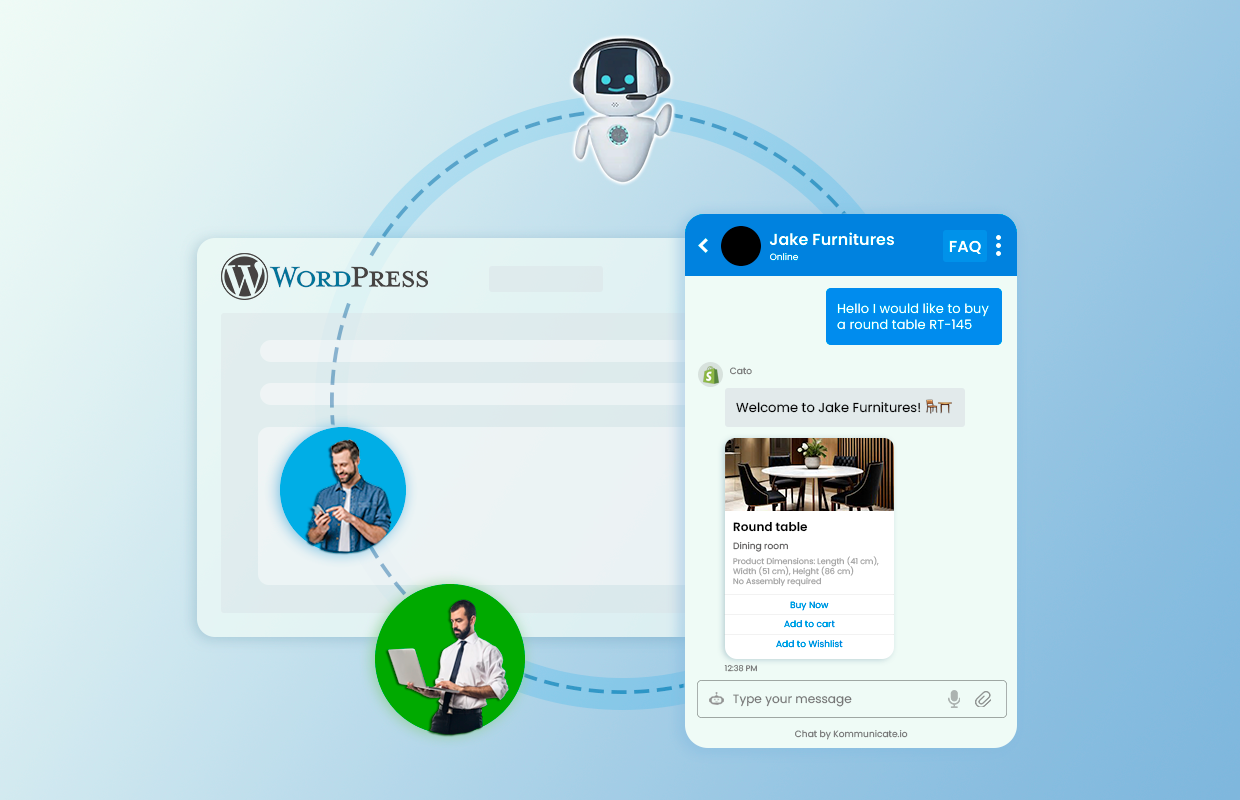
Supporting about 40% of websites on the internet, WordPress has been in the marketing industry for quite a while now. The reason behind its popularity is the way it manages the content for different businesses. It is simple and reliable which is why many users either build websites on their own or hire WordPress developers for the same. But for longer life, tools need to come up with new updates and offer new ways for users and developers to be interactive with their content.
WordPress is backed by PHP whereas the web nowadays is relying more on Javascript to create interactive websites. In this case, to maintain its user base and remain in the league, WordPress introduced REST API. REST API has given WordPress a new identity by expanding WordPress as a platform. It brings PHP WordPress core and the JavaScript web application together making it easier for developers to provide an interface for applications to interact with WordPress.
WordPress REST API provides an entirely new admin experience for WordPress by allowing you to create plugins like – building an interactive GUI, or bringing your WordPress content into completely separate applications.
What is REST API?
API stands for Application Programming Interface and REST is REpresentational State Transfer. Altogether it is a series of ideas for mapping and accessing the app’s data as interconnected objects and sets. REST URLs representing posts, sites, taxonomies, and other built-in WordPress data types are supported by the WordPress REST API. When you send or request content from API you receive the data in JSON format. JSON is a string or a textual representation of a Javascript object that is lightweight and easily readable. It stores data in a set of key-value pairs.
[Also Read: Which Platform Should I Host My Website On – Drupal or WordPress?]
JSON is supported by programming languages that enable developers to build WordPress applications in client-side JavaScript.
It provides data access to the site’s content. REST API makes public content accessible to the public whereas, the private content is password-protected available only for internal users
It’s the backbone of the WordPress Block Editor, and it can also help your theme, plugin, or custom application to provide new, immersive, and interactive interfaces for managing and publishing website content.
How does a WordPress API work?
Right now, there are several different types of Application Programming Interfaces (APIs), but REST stands out by not being a mainstream option. It works by transferring textual data from one location to another without bringing a database or user interface directly into the picture.
The REST API uses JavaScript Object Notation (JSON) formatting and is provided via HyperText Transfer Protocol (HTTP) endpoints. The posts, pages, and other WordPress data types are defined by these endpoints. REST APIs can receive and respond to a particular type of requests, using simple HTML commands some of them are stated below:
GET: This command asks the server for a resource (such as a particular piece of data).
POST: The client sends a request to the server to add a resource.
PUT: This helps you to modify or upgrade an existing resource on the server.
DELETE This command, as the name indicates, deletes a resource from the server.
Along with these instructions, the client will send information specifying which resource is needed and how it should be used.
How is it beneficial to Developers?
Developers are no longer restricted to PHP and can use WordPress to manage data through REST API. WordPress REST API enables WordPress to share data with other websites and applications written in any programming language.
Javascript used for growth has grown in parallel with the increased use of API.
The growing emphasis on APIs has sparked discussion about which programming language is the most important to learn. Since the REST API is supported by JavaScript, you can soon discover that server-side JavaScript will fully replace PHP.
The REST API optimizes how applications communicate with WordPress data, making WordPress creation easier and more effective.
How to start using WordPress REST API?
Let’s see how to start using the WordPress REST API in 3 steps :
Step 1: Access the REST API
Any application that accepts HTTP endpoints can ‘access’ the WordPress REST API. For example, if you type the following command into your browser, you’ll get a JSON-formatted list of your WordPress posts:
GET yourwebsiteurl.com/wp-json/wp/v2/posts
You must substitute the default URL with the address of your website. For a REST API request to work, you’ll also need WordPress version 4.4 or higher.
A browser, on the other hand, isn’t the best tool for experimenting with the REST API. Instead, we recommend using the command line, which allows for more flexibility.
Step 2: Locate a Specific Post Making use of the REST API
The previous command should have returned a list of all your WordPress entries, complete with post IDs. You’d use an endpoint like this to get a particular post based on its ID:
GET yourwebsiteurl.com/wp-json/wp/v2/posts/535
This is perfect for displaying a specific post translated into a mobile app. The WordPress REST API, on the other hand, allows you to retrieve any type of data from WordPress, making its practical applications extremely versatile. Instead of simply fetching a message, you might use the REST API to add metadata to it. In other words, instead of using the GET form, you’ll use the POST method.
Step 3: Adding Metadata to a Particular Post
Let’s say you’ve already been authenticated, now you can add new data to any of your posts with a request similar to the one presented in the previous section, but this time using POST instead of GET:
POST yourwebsiteurl.com/wp-json/wp/v2/posts/535/meta?value=newmetadata
For example, if you want to add metadata to a template that can be used to construct a rich sample, your request could look like this:
POST yourwebsiteurl.com/wp-json/wp/v2/posts/535/meta?cookingtime=25
Decide how much metadata you want to include and then define it using JSON objects, which is a much more organized approach. In any case, once you understand what the most common endpoints are and how to use them, a whole new world of possibilities becomes possible.
Endpoints may be added to WordPress.
Custom routes and endpoints are provided by the WordPress REST API. If you wish to create another WordPress site and merge the two, these are helpful.
[Also Read: Joomla Struggles With WordPress & Drupal To Hold Its Position]
In the REST API, routes may have an infinite number of endpoints. For each endpoint, you can define HTTP methods, callback functions, and permissions, as well as default values and several other parameters. Integrate the best endpoint management software to enable further scalability and control.
Conclusion:- REST API integration to WordPress core has been around for many years now. If you’re planning to build a WordPress website, lots of learnings are going to come the way that will improve your skills and help you to develop apps using WordPress development services.
Related Articles
-
10 Important Tips For Entrepreneurs To Look In WordPress Development Agency Before New Startup
WordPress is widely acclaimed as the go-to option for business owners for effective website development, from budding entrepreneurs to industry giants. The platform is home to over 43% of websites
-
Revolutionizing Customer Interaction: The Power of WordPress Chatbot Integration Services
WordPress chatbot is transforming the world of customer interaction. In the world where customer engagement is very crucial this creative method is simplifying the process. It improves customer experience on
-
10 Tricks to Redesign Your Website that Actually Add Value
Is your website still running with the age-old theme, colors, and design? If yes, then it is time to revamp it to appeal to the discerning customers of today. But




